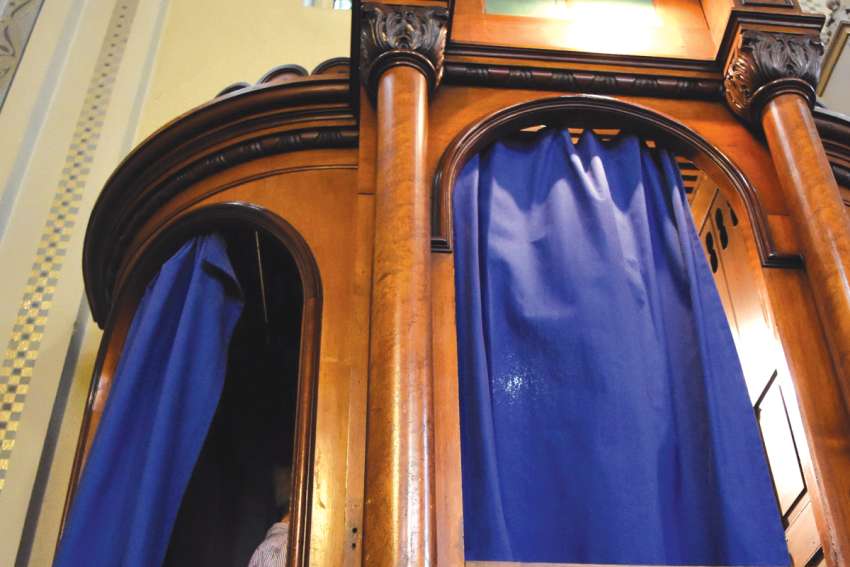There was a metal sign above the priest’s door — in capitals, no accents: M. LE CURE. As an English-speaking boy not yet fluent in French, I looked at the sign in bemusement. It was only later on I understood the sign’s meaning: “Monsieur le curé,” or the priest of that particular parish. Parishioners knew when an empty compartment would become available to see the priest by looking at feet sticking out beyond those embroidered curtains — feet with modest high heels, feet with scuffed dress shoes.
I knew my prayers, but in the confession box would I mildly panic and forget the initial prayer (“Bless me, Father...”) to begin the rite? I’d wait for the priest to finish with the penitent in the other compartment, and quietly practise in my muted darkness. I’d then hear the small sliding door on the other side. The priest had finished with the other penitent, and would next slide open my little door. He was always in dark profile, head canted slightly, solemn and impenetrable behind the latticed opening of screen and metal. I’d speak and pray in English to the priest (in Canada, surely God was bilingual, and He had to be a polyglot, too, to speak to theists around the world). After my confession, the priest would give me penance for my mischief and anodyne sins; I was absolved.
NUMBERS 5:7 ~“...he shall confess the sin which he has committed. He shall make restitution…”
The confession box feature that most intrigued me were the two little red light bulbs above the penitents’ compartments: Each had a bulb. Parishioners were to monitor the bulbs to see if compartments were empty — if a given bulb was lighted, a penitent was confessing; if that bulb wasn’t lighted, no penitent was confessing. However, the thing is the bulbs never worked — they were never illuminated. Parishioners instead looked at those protruding feet to see if compartments were empty. I so wanted to see those little red light bulbs lighted. The confession boxes were classic and ornate, and the church had other forms of colour — such as eye-catching icons, wafting candle smells, and the intricate, ecclesiastical splash of the church’s stained glass, but I was 8-years-old. I wanted that bright, resplendent pop of red.
My Catholicism was tenuous by 15 or 16, and by my early 20s I evolved seamlessly to humanism. There was no internal conflict, no real transgressions to repent. Humanism was a fit that centred me, and Catholicism became a valued childhood memory with mindfulness about the dynamics of belief, and there was the charm and intrigue of those unique adornments of faith. In the latter case, things like icons, candle smells, stained glass, and of course, confession boxes.
I wish all readers your own bright, resplendent pop of red.
(Mel Simoneau’s writing has appeared in Postmedia Network, the Literary Review of Canada, and Arc Poetry Magazine.)


